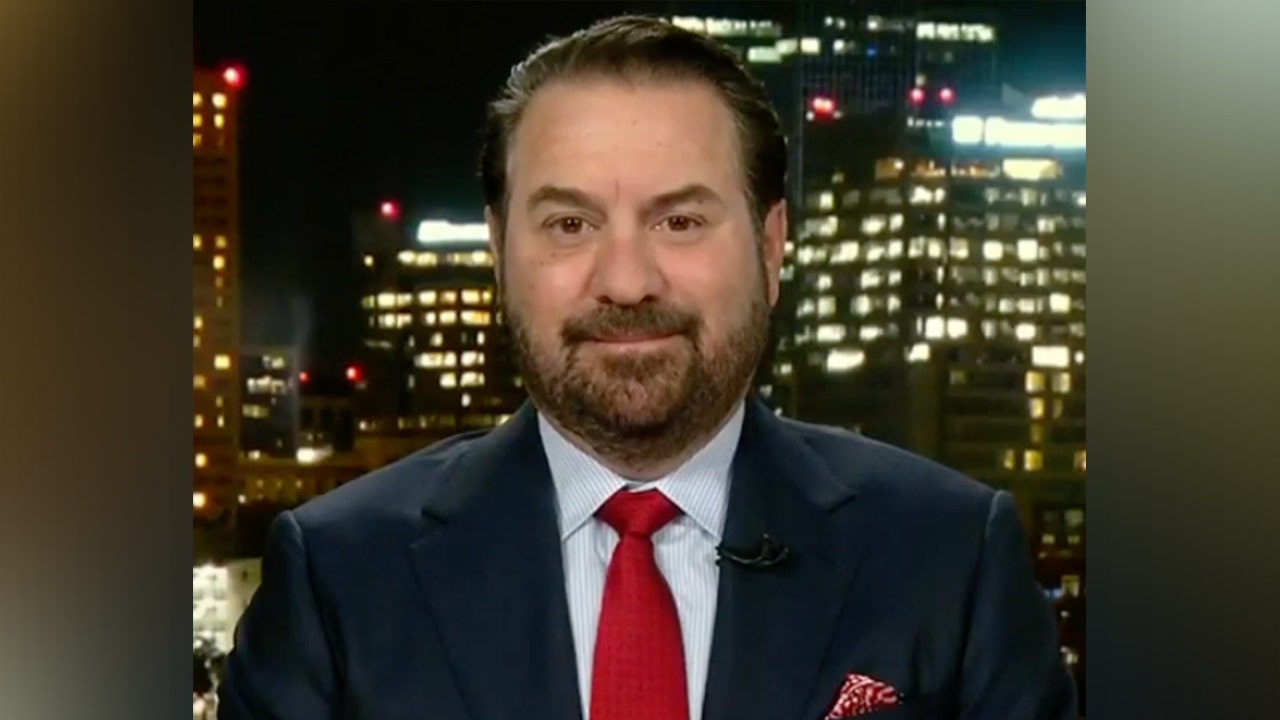Health
Food Safety Jeopardized by Onslaught of Funding and Staff Cuts

In the last few years, foodborne pathogens have had devastating consequences that alarmed the public. Bacteria in infant formula sickened babies. Deli meat ridden with listeria killed 10 people and led to 60 hospitalizations in 19 states. Lead-laden applesauce pouches poisoned young children.
In each outbreak, state and federal officials connected the dots from each sick person to a tainted product and ensured the recalled food was pulled off the shelves.
Some of those employees and their specific roles in ending outbreaks are now threatened by Trump administration measures to increase government efficiency, which come on top of cuts already being made by the Food and Drug Administration’s chronically underfunded food division.
Like the food safety system itself, the cutbacks and new administrative hurdles are spread across an array of federal and state agencies.
At the Food and Drug Administration, freezes on government credit card spending ordered by the Trump administration have impeded staff members from buying food to perform routine tests for deadly bacteria. In states, a $34 million cut by the F.D.A. could reduce the number of employees who ensure that tainted products — like tin pouches of lead-laden applesauce sold in 2023 — are tested in labs and taken off store shelves. F.D.A. staff members are also bracing for further Trump administration personnel reductions.
And at the Agriculture Department, a committee studying deadly bacteria was recently disbanded, even as it was developing advice on how to better target pathogens that can shut down the kidneys. Committee members were also devising an education plan for new parents on bacteria that can live in powdered infant formula. “Further work on your report and recommendations will be prohibited,” read a Trump administration email to the committee members.
Taken together, there is concern in the food safety field that the number of outbreaks could grow or evade detection. By limiting resources, the cutbacks pare back work meant to prevent problems and to focus efforts on cases in which someone was already hurt or killed, Darin Detwiler, a food safety consultant and associate professor at Northeastern University, said. His toddler son died in an E. coli outbreak in 1993.
“It’s as if someone, without enough information, has said, What’s a good way to save money on our automobiles?” he asked. “Let’s just take out the seatbelts and airbags, because do we really need them?”
Robert F. Kennedy Jr., the nation’s health secretary, has a keen interest in food. He has already pledged to get color additives out of food and started an effort called “Operation Stork Speed” to examine the nutritional content and potential toxins in infant formula. Yet some of the most dangerous food problems in recent years have been from pathogens.
Last year, nearly 500 people were hospitalized and 19 died from foodborne illnesses with a known cause, double or more than in the year before, according to the U.S. P.I.R.G. Education Fund, an advocacy group. (Most food poisoning is never reported or traced back to a particular food.)
Government cutbacks affect a number of areas that officials were shoring up to prevent repeats of recent outbreaks. Here are the details of some of the changes:
Key committees shut down
Often in response to a deadly outbreak, a joint F.D.A. and Agriculture Department committee dived into the details to seek ways to improve detection and to limit illness and death. The committee has also examined how to deploy rapidly changing technology — including artificial intelligence and genome sequencing — to protect public health.
The Trump administration abruptly shut down the committee earlier this month, citing the executive order on reducing government bureaucracy. It demanded that work stop for the panel called the National Advisory Committee on Microbiological Criteria for Foods and also for the National Advisory Committee on Meat and Poultry Inspection.
The microbial committee was studying how to more accurately identify infants who would be most at risk from cronobacter sakazakii, the deadly bacteria that contributed to the decision to temporarily shut down an Abbott Nutrition infant formula plant in Michigan in 2022. The committee planned to then provide advice to caregivers who should use sterile liquid formula instead of powdered formula, which is not sterile.
Abby Snyder, a Cornell University food scientist and co-chair of a subcommittee on infant formula, said she was disappointed by the decision to discontinue the committee’s work. “Safety of powdered formula for infants is of critical importance and I think important to most people,” Dr. Snyder said.
The F.D.A. did not respond to a question about whether Kyle Diamantas, its food division chief, was involved in the decision to axe the committee. A former corporate lawyer, Mr. Diamantas worked on cases defending Abbott over claims of harm related to infant formula.
Michael Hansen, a scientist and member of the committee from Consumer Reports, an advocacy group, said his team on the committee was trying to pinpoint certain types of E. coli that were most likely to cause bloody diarrhea and kidney failure, among other efforts.
He said the decision to end the committee was a shock and destroyed almost two years of work on harnessing genomic sequencing — technology that is now widely available and affordable — to limit outbreaks. The team leveraged hours of volunteer work from the top experts in the field, he said.
“It makes no sense that they were getting rid of this committee,” Dr. Hansen said, “because if you want to do a full cost-benefit analysis, all the work that we were doing was actually free of charge.”
Spending freezes
Scientists at the F.D.A.’s product and food testing labs said they were barred from some routine use of their government credit cards because of an executive order backing the efforts of Elon Musk’s so-called Department of Government Efficiency.
An exception has been made for “critical activities,” an F.D.A. spokeswoman said.
That has slowed or stopped some testing of grocery items for hazardous bacteria and monitoring of shellfish and food packaging for PFAS, chemicals linked to cancer and reproductive harm.
Credit cards can be used in an investigation of listeria in frozen supplemental shakes dispensed in elder care homes that have been linked to a dozen deaths. For other work, staff members have encountered red tape, agency scientists said.
“Even hours can matter in an outbreak,” said Susan Mayne, an adjunct professor at Yale School of Public Health and a former F.D.A. food official who had heard from current employees about the situation. “Any delay is unacceptable when you’re dealing with a product that can kill someone.”
Food safety inspections
In a recent letter to lawmakers, F.D.A. officials said that the agency employed about 443 food safety inspectors — far fewer than the agency needed to inspect every food processing facility at the pace Congress mandated. The agency estimated that it would need about 1,500 more workers to inspect 36,600 food facilities, foreign and domestic, once every five years or once every three years for high-risk producers.
At this time, those inspectors are largely exempted from losing their jobs.
However, one team of outbreak investigators is vulnerable, according to Jim Jones, the agency’s food division chief in the latter part of the Biden administration. This team, known as CORE, coordinates with the Centers for Disease Control and Prevention to link a cluster of sick people to a specific food plant or farmer’s field. The team tracks inspections and efforts to ensure that tainted food is removed from store shelves.
Mr. Jones said the team was recently built up as a fully remote operation that would most likely be affected when orders to return to work at federal offices were put in place this month. Workers who live more than 50 miles from an F.D.A. office have until late April to begin working at a federal site.
“So their choices will be you either move so that you can go to a federal facility, or you leave,” Mr. Jones said. “There’s nothing strategic about who gets caught in that pickle.”
Across the F.D.A., inspections plummeted during the pandemic and have not returned to the higher levels before 2020. At the same time, the amount of imported food has risen, including clams that have repeatedly found to be contaminated with PFAS.
Cutbacks to States
Once the F.D.A. identifies a factory that was the source of contamination, it often relies on state inspectors to investigate on site. In criticizing the reductions, Senator Richard Blumenthal, Democrat of Connecticut, pointed out that state inspectors performed about half of the inspections at food processing facilities, 90 percent of the produce safety inspections and all of the retail store visits.
The F.D.A. also turns to state and local public health officials to pluck potentially tainted foods from grocery store shelves and test them at a network of 55 public health labs throughout the United States. If a product is recalled, the state officials also audit grocery stores to be sure the food has been removed.
A move late in the Biden era sharply limited the funding that the F.D.A. sends to states and to the labs that do critical work. The latest $34 million funding reduction applies to states and to those public health labs. The agency said in a letter to Mr. Blumenthal that the cuts were being made because the food division had a flat budget and costs were increasing because of inflation.
Thom Petersen, commissioner of the Minnesota Department of Agriculture, said F.D.A. food safety funding had fallen steadily since 2019, with the latest cut striking deeper and possibly leading to layoffs. He said the funding loss could slow the important work of taking bad food out of stores.
That work proved particularly important after officials discovered extremely high levels of lead in cinnamon in applesauce pouch snacks for children. The F.D.A. ended up sending a warning letter to Dollar Tree over its failure to quickly pull the pouches.
“Timing is the important piece,” Mr. Petersen said. “We want to take care of those and work on that.“
The public health labs reported that the money amounted to about 30 percent of their funding, which helps them respond to outbreaks more quickly than the F.D.A.
In the Boar’s Head listeria outbreak, for instance, lab officials in Maryland and New York bought liverwurst at stores that tested positive for the same strain that sickened people. A trade group for the labs predicted that the budget cuts could delay responses — and lead to more people getting sick.

Health
What to Know About Adderall, Ritalin and Other Prescription Stimulants

Health Secretary Robert F. Kennedy Jr. has often criticized prescription stimulants, such as Adderall, that are primarily used to treat attention deficit hyperactivity disorder.
“We have damaged this entire generation,” he said last year during a podcast, referring to the number of children taking psychiatric medications. “We have poisoned them.”
In February, the “Make America Healthy Again” commission, led by Mr. Kennedy, announced plans to evaluate the “threat” posed by drugs like prescription stimulants.
But are they a threat? And if so, to whom?
Like many medications, prescription stimulants have potential side effects, and there are people who misuse them. Yet these drugs are also considered some of the most effective and well-researched treatments that psychiatry has to offer, said Dr. Jeffrey H. Newcorn, the director of the Division of A.D.H.D. and Learning Disorders at the Icahn School of Medicine at Mount Sinai in New York.
Here are some answers to common questions and concerns about stimulants.
What are prescription stimulants?
Prescription stimulants are drugs that help change the way the brain works by increasing the communication among neurons.
They are divided into two classes: methylphenidates (like Ritalin, Focalin and Concerta) and amphetamines (like Vyvanse and Adderall).
The drugs are most often prescribed to treat A.D.H.D., but they’re also used for conditions like narcolepsy or a binge eating disorder. Sometimes they are also used off-label, for treatment-resistant depression, or catatonia, a syndrome that can cause a patient to move in unusual ways, become immobile or stop talking.
The medications work by amplifying the activity of the neurotransmitters dopamine and norepinephrine in the nerve cells of the brain. Dopamine plays a role in creating the desire for something and the motivation to get it, while norepinephrine can increase alertness and make it easier to focus.
People with A.D.H.D. may have a deficit of both of these chemicals, so when they use stimulants it essentially helps “even them out,” said Dr. Anthony L. Rostain, chairman of the department of Psychiatry and Behavioral Health at Cooper University Health Care, which is based in Camden, N.J.
For some users, the effects are profound. “It’s like glasses for poor vision,” Dr. Rostain said.
Are stimulants always used to treat A.D.H.D.?
No.
Not everyone who has been diagnosed with A.D.H.D. takes stimulants. There are also non-stimulant medications, like Strattera (atomoxetine). And some people don’t require any medication at all.
Other interventions, such as behavioral therapy, parent training, school supports, and lifestyle changes to regulate sleep and exercise, are important — regardless of whether someone needs medication or not.
How many people are taking them?
The use of prescription stimulants has been on the rise since 2012, particularly among adults, and has sharply increased in recent years among women as well as patients ages 20 to 39.
In 2023, an estimated 6 percent of adults had a current diagnosis of A.D.H.D. and about one-third of those patients reported taking prescription stimulant medication, according to an analysis from the Centers for Disease Control and Prevention.
In children and adolescents, however, the number of stimulant prescriptions has been more stable in recent decades.
Overall, it is estimated that about 5 percent of children in the U.S. are currently prescribed medication for A.D.H.D. (Not 15 percent, the number stated by Mr. Kennedy during his confirmation hearing in January.)
A study published in February found that prescriptions actually declined among children after the pandemic began.
How often are prescription stimulants misused?
Government drug use surveys show that in 2022, among people 12 and older, 1.5 percent reported misusing prescription stimulants in the past year — taking the drugs without a doctor telling them to do so, or not in the manner they were prescribed. Sometimes people are aspiring to be more productive or to stay awake, but the drugs are also used recreationally, and can produce a high by swallowing, smoking or snorting the medication — or injecting it into the bloodstream.
Young adults ages 18 to 25 had the highest rates of misuse: 3.7 percent.
Among adolescents 12 to 17, the percentage of misuse was much smaller: 0.9 percent.
This number can vary depending on where they live: In some U.S. schools, as many as 1 in 4 high school students report misusing prescription stimulants, often motivated by their desire to perform better in school. Some schools report no issue with stimulant misuse.
What are the potential side effects?
Taking stimulants can cause elevated blood pressure and heart rate, a reduced appetite, difficulty sleeping, and restlessness or agitation.
Other common side effects include headaches, an increase in body temperature and abdominal pain.
Less frequently, stimulants have been known to temporarily slow a child’s growth, Dr. Rostain said, which is why they should have their height and weight monitored by a medical provider while they’re taking the drugs.
There is also a small risk of developing psychosis that may be tied to dosage. And when stimulants are misused, they can be addictive.
Patients and their doctors have to weigh the benefits of taking stimulants against these risks. A.D.H.D., particularly when left untreated, is associated with reckless behaviors like careless driving, unsafe sex, substance abuse and aggression. A recent study showed that people with the diagnosis are, on average, dying earlier than their peers — about seven years earlier for men, and about nine for women.
How long should stimulants be used?
It depends.
Studies have shown that A.D.H.D. symptoms can change over time, improving and then worsening again, or vice versa. “It’s not consistent,” Dr. Rostain said. “They wax and wane for many people.”
As a result, he added, people may end up using A.D.H.D. medications intermittently.
Still, some people take these drugs longer term, said Dr. Lenard A. Adler, the director of NYU Langone Health’s Adult A.D.H.D. Program.
“That being said, it’s always appropriate when someone is stable on psychostimulants to attempt to lower the dose,” Dr. Adler added.
If a patient continues to do well, he said, then it’s worth exploring whether the medication is still needed.
Is there still a medication shortage?
Yes.
The stimulant shortage that began in 2022 continues. According to the Food and Drug Administration, as of March, methylphenidate hydrochloride extended release tablets and patches, as well as other types of amphetamine tablets, are either unavailable or in short supply.
The availability of specific drugs and formulations can vary by region, Dr. Rostain said.
“It leads to a lot of uncertainty, unpredictability and a lot of anxiety on the part of patients,” he added.
Health
Are full-body scans worth the money? Doctors share what you should know
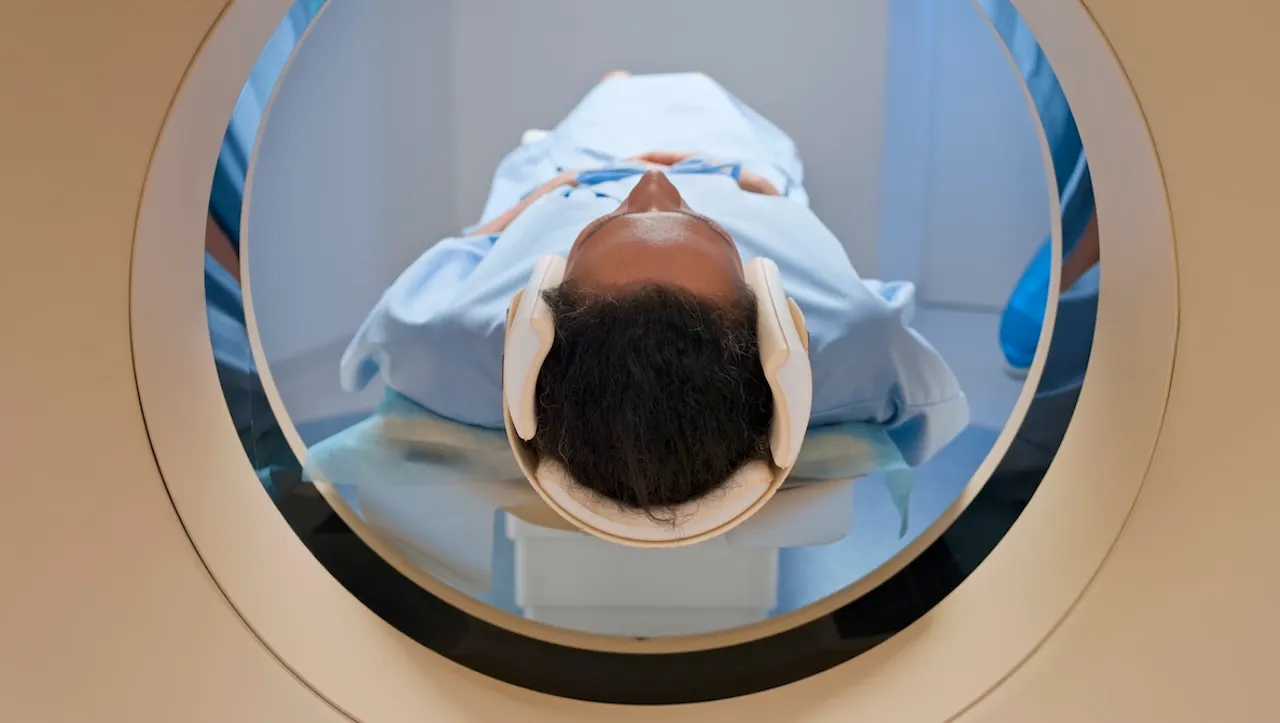
With celebrities such as Kim Kardashian and Paris Hilton singing the praises of full-body MRI scans, a growing number of people are coughing up the cash for the preventive measure — but is the peace of mind worth the hefty price tag?
Dr. Mikhail Varshavski, more commonly known as “Dr. Mike,” is a podcaster and primary care physician in New Jersey. He recently spoke about full-body scans with Andrew Lacy, CEO of Prenuvo, one of the biggest providers of full-body scans.
“I have to say, I’m certainly intrigued by the technology and I’m in love with the concept of catching diseases earlier so that we can have more success with treatment,” Dr. Mike said during the podcast.
THESE 8 HEALTH SCREENINGS SHOULD BE ON YOUR CALENDAR FOR 2024, ACCORDING TO DOCTORS
“However, I am still not sold that this is what the Prenuvo scan has proven to deliver. In the day and age where we find ourselves, folks want more out of healthcare than we can yet deliver.”
How do full-body scans work?
Full-body scans use different technologies, including magnetic resonance imaging (MRI), computed tomography (CT) or positron emission tomography (PET), according to the Dana-Farber Cancer Institute.
Full-body scans use a variety of technologies, including magnetic resonance imaging (MRI), computed tomography (CT) or positron emission tomography (PET). (iStock)
The goal is to detect early signs of diseases such as cancer, heart disease and other abnormalities.
Dr. Daniel Durand, chief medical officer at Prenuvo, who is based in Maryland, compared the scan to a “virtual physical” in which a radiologist examines the inside of the body in a way that a traditional annual physical cannot.
Prenuvo’s scan uses MRI technology to collect a “vast amount of health data,” he told Fox News Digital.
5 CANCER TYPES WHERE SCREENINGS SAVE THE MOST LIVES
“Two licensed providers analyze this data, explain its relevance directly to you and offer you guidance on the next steps necessary to optimize your health,” he said.
Insurance does not typically cover whole-body scans.
“Coverage usually varies widely by insurance plan, jurisdiction, and the specific clinical guidelines for each genetic condition,” Dr. Mike told Fox News Digital.
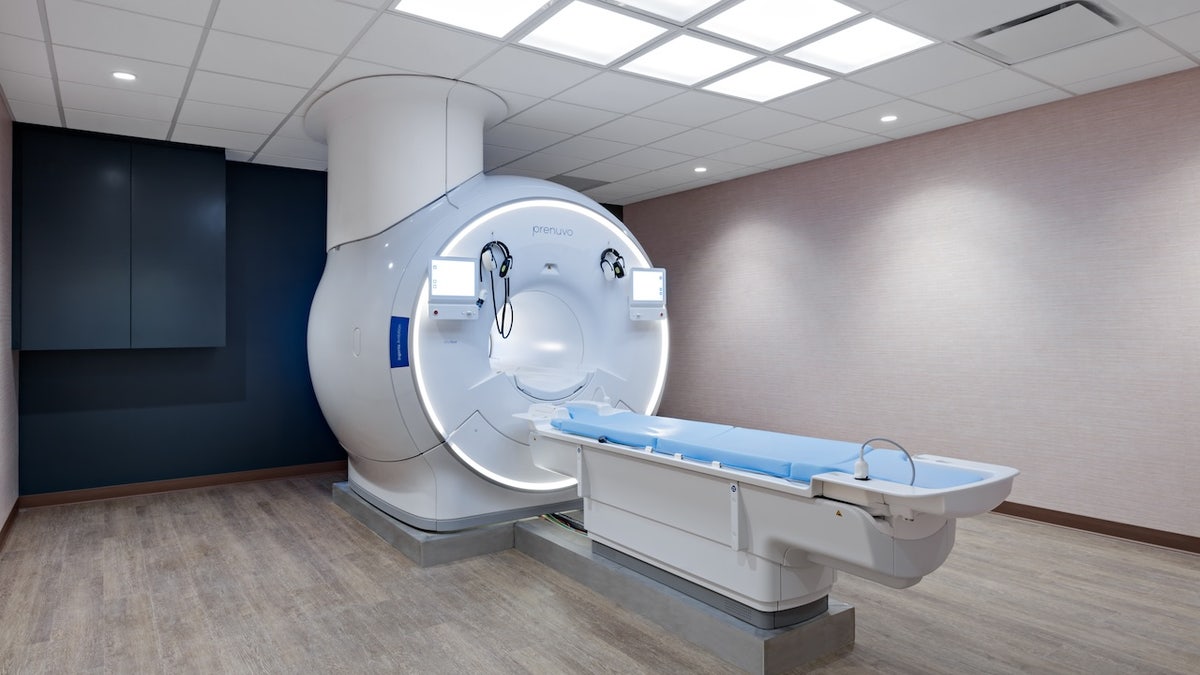
A chief medical officer compared the scan to a “virtual physical” in which a radiologist examines the inside of the body in a way that a traditional annual physical cannot do. (Prenuvo)
“My general understanding is that for screening purposes, the test is usually not covered, given the lack of documented clinical benefit versus harms.”
Some coverage may be offered, however, for those with high-risk genetic syndromes or other specific medical conditions, the doctor noted.
“Our hope is that over time, insurers will see the many benefits of our proactive approach to healthcare and will broaden coverage,” Prenuvo’s Durand said.
COMMON CANCER TYPE COULD BE DETECTED WITH NEW BLOOD TEST
“We are actively engaged in several research studies that could provide a foundation for insurance reimbursement.”
Depending on the provider and options selected, prices for full-body scans can be as high as $2,500.
The two biggest providers of full-body scans are Prenuvo (headquartered in California) and Ezra (based in New York City).
Potential benefits
Dr. Brett Osborn, a Florida neurologist and longevity expert, previously spoke with Fox News Digital about the benefits of full-body MRI scans.
“Full-body scanning, mainly through MRI, presents a significant advancement in modern medicine’s diagnostic capabilities,” he said.
“In many cases, the earliest signs of diseases — like cancers, infections or aneurysms — will be seen.”
“MRI technology allows for a comprehensive, noninvasive examination of the body to detect a wide range of conditions, including cancer and vascular malformations like aneurysms, without the need for potentially harmful radiation, as is the case with CT scans,” he also said.
Durand claimed that a Prenuvo scan can detect many diseases based on changes to the inside of the body that can be detected by MRI.
“Usually these changes happen before symptoms occur or before there are signs on a physical exam,” he told Fox News Digital.
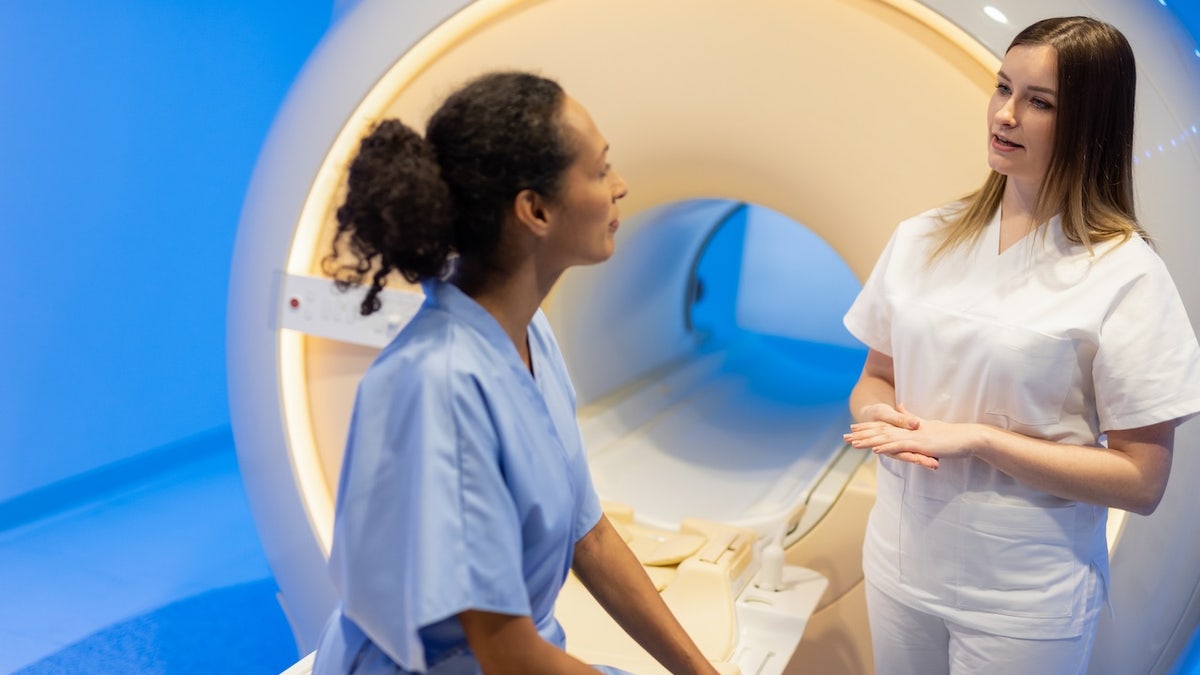
“MRI technology allows for a comprehensive, noninvasive examination of the body to detect a wide range of conditions, including cancer and vascular malformations like aneurysms, without the need for potentially harmful X-rays, as is the case with CT scans,” one neurosurgeon said. (iStock)
“So, in many cases, the earliest signs of diseases — like cancers, infections or aneurysms — will be seen,” he went on. “By seeing them earlier, you can be treated earlier, hopefully before the disease has done little to no permanent damage.”
Doctors share concerns
Dr. Mike told Fox News Digital that he has not recommended that any of his patients get an MRI screening scan.
“The high upfront cost and lack of clear medical indication for broad screening (if you’re low-risk and asymptomatic) lead me to agree with the major medical organizations that routine whole-body MRI screening for the general population is not recommended,” he said.
CANCER SCREENINGS: HERE ARE 5 TYPES AND CRITICAL INFORMATION TO KNOW ABOUT EACH
Much of the popularity of these scans has been driven by celebrities, who sometimes receive them for free, Dr. Mike said — which he finds concerning.
“My understanding is that even receiving a free scan is a business relationship that the FTC requires disclosing,” he said. “My understanding is that the companies themselves cannot claim their tests save lives, so they work with celebs who can make personal claims that are not subject to the same investigational scrutiny.”

“With the current level of technology, I am against full-body scans in favor of more directed workups initiated by expert physicians who know what they are looking for,” one doctor told Fox News Digital. (iStock)
“This also sends a conflicting message to the consumer and creates confusion.”
Dr. Marc Siegel, clinical professor of medicine at NYU Langone Health and Fox News’ senior medical analyst, also does not recommend these scans to patients.
“If you do a full-body scan, you will be inclined to pursue every positive finding, whether they are really significant or not.”
“With the current level of technology, I am against full-body scans in favor of more directed workups initiated by expert physicians who know what they are looking for,” he told Fox News Digital.
“If you do a full-body scan, you will be inclined to pursue every positive finding, whether they are really significant or not.”
Siegel also noted the high expense and the fact that full-body scans are “frequently oversensitive.”
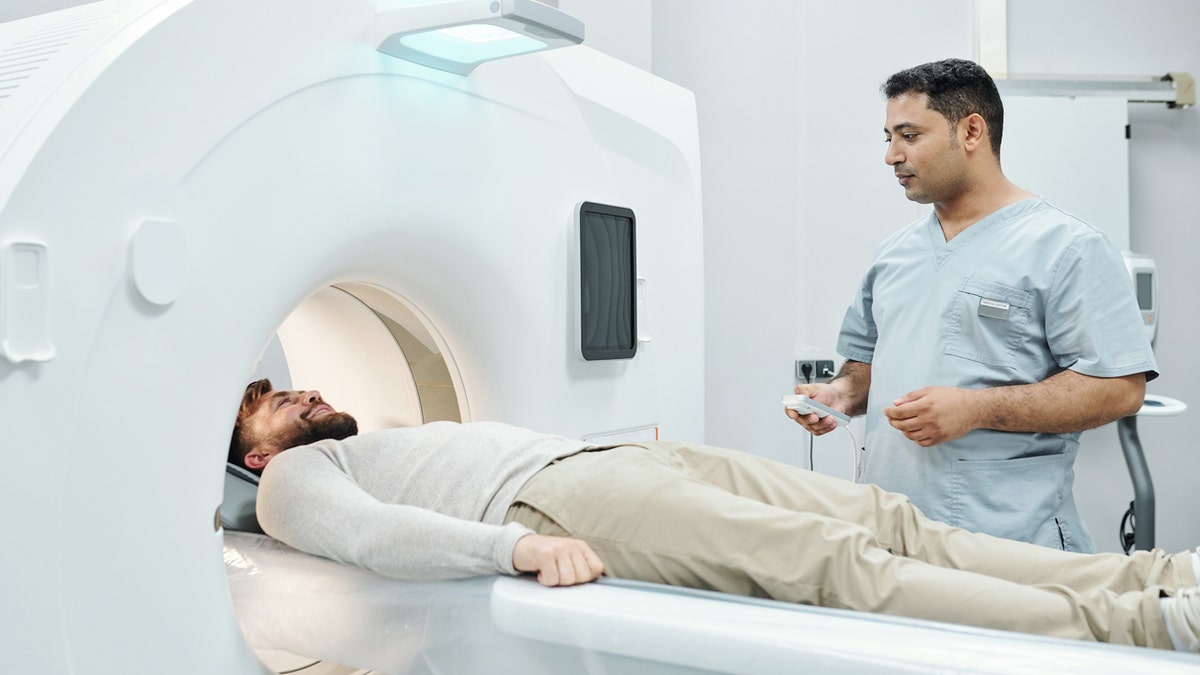
One doctor warned of mental risks, including anxiety during the procedure (claustrophobia), stress from incidental findings and an increase in health-related worries. (iStock)
“They may take the place of more directed, accurate studies and screening tests that are more suited to the symptoms, history and genetic tests in specific patients,” Siegel cautioned.
The doctor also noted the current shift toward more personalized healthcare approaches, “augmented by not just genetics, but also artificial intelligence.”
“This will lead to more directed workups, not to more full-body scans.”
The most significant risks that come with these full-body scans, according to Dr. Mike, are the issues that arise with false positives, overdiagnosis and overtreatment.
CLICK HERE TO SIGN UP FOR OUR HEALTH NEWSLETTER
There are also mental risks, including anxiety during the procedure (claustrophobia), stress from incidental findings and an increase in health-related worries, the doctor noted.
“Some proponents say it can ease health-related anxiety; however, I am pretty skeptical of that claim,” he said. “Based on my clinical experience, even getting a clear scan would secure peace of mind only temporarily.”
“We don’t know if we are saving more people by catching disease early or harming more people with overdiagnosis, false positives and overtreatment.”
Research published in 2020 found that imaging abnormalities are expected in about 95% of screened subjects, according to the doctor.
“This means the majority of those scanned will have some sort of finding presented to them,” he said. “I can’t imagine how helpful that would be to someone already prone to health worries.”
During Dr. Mike’s podcast interview with Lacy, the Prenuvo CEO said that long-term data on these screening scans is not yet available.
“So, currently, we don’t know if we are saving more people by catching disease early or harming more people with overdiagnosis, false positives and overtreatment,” Dr. Mike said.
“Barring emergencies, if I don’t have clear data about the harms and benefits of an intervention, especially one that is meant to be used on healthy people, I cannot widely recommend it.”
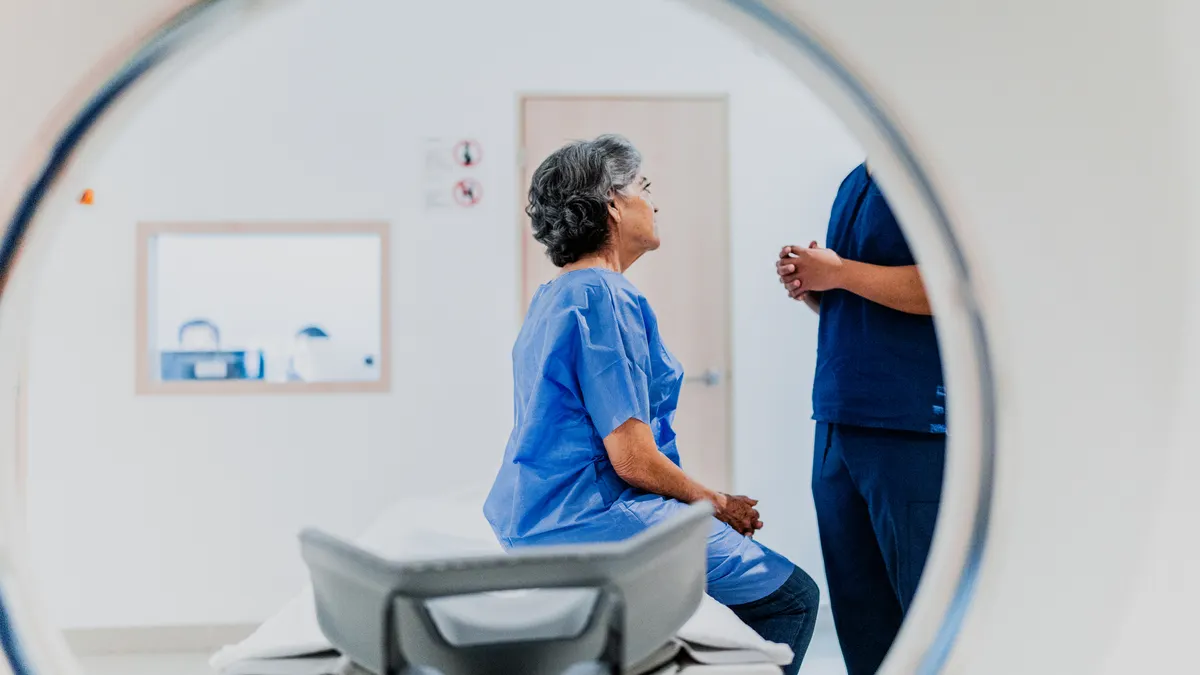
“Before having a CT screening procedure, carefully investigate and consider the potential risks and benefits and discuss them with your physician,” the FDA advised. (iStock)
Prenuvo did cite a recent study of over 1,000 patients who were followed over a one-year period.
“In this sample, we found pathologically-proven cancer in 2.2% of Prenuvo patients,” Durand told Fox News Digital. “Importantly, most of these cancers were early stage, and the majority were cancer types for which there is no widely accepted screening exam.”
Guidelines of health agencies
The most recent guidance from the FDA echoes the doctors’ concerns.
“At this time, the FDA knows of no scientific evidence demonstrating that whole-body scanning of individuals without symptoms provides more benefit than harm to people being screened,” the agency stated on its website.
For more Health articles, visit www.foxnews.com/health
The FDA also warned about the “relatively high radiation exposure” from CT scans. While this exposure risk is “greatly outweighed” by the benefits of diagnostic and therapeutic scans, the agency said that for whole-body screening of asymptomatic people, “the benefits are questionable.”
“Before having a CT screening procedure, carefully investigate and consider the potential risks and benefits and discuss them with your physician,” the FDA advised.
The American Academy of Family Physicians (AAFP) also recommends against full-body scans for early tumor detection in asymptomatic patients.
Health
10,000 Federal Health Workers to Be Laid Off

The Trump administration announced on Thursday that it was laying off 10,000 employees at the Health and Human Services Department as part of a broad reorganization that reflects the priorities of the health secretary, Robert F. Kennedy Jr., and the White House’s drive to shrink the government.
The layoffs are a drastic reduction in personnel for the health department, which had employed about 82,000 people and touches the lives of every American through its oversight of medical care, food and drugs.
The layoffs and reorganization will cut especially deep at two agencies within the department that have been in Mr. Kennedy’s sights: the Food and Drug Administration and the Centers for Disease Control and Prevention. Those agencies are expected to lose roughly 20 percent of their staff members from the latest cuts alone.
Together with previous buyouts and early retirements spurred by Trump administration policies, the move will pare the health department down to about 62,000 employees, the agency said.
The restructuring is intended to bring communications and other functions directly under Mr. Kennedy. And it includes creating a new division called the Administration for a Healthy America.
“We’re going to do more with less,” Mr. Kennedy said, even as he acknowledged that it would be “a painful period for H.H.S.”
Mr. Kennedy asserted that rates of chronic disease rose under the Biden administration even as the government grew. But he did not provide data to back up his claim; experts say that rates of chronic disease have been rising for the past two decades, including under the first Trump administration. Two 2024 analyses of the issue used C.D.C. data from 2020.
The health secretary pitched the changes as a way to refocus the agency on Americans’ health, but did not outline any specifics on how he would reduce rates of diabetes, heart disease or any other conditions.
Inside the affected agencies, stunned employees struggled to absorb the news. Democrats and outside experts said the move would decimate agencies charged with protecting the health and safety of the American public, depriving it of the scientific expertise necessary to respond to current and future biological threats.
“In the middle of worsening nationwide outbreaks of bird flu and measles, not to mention a fentanyl epidemic, Trump is wrecking vital health agencies with the precision of a bull in a china shop,” said Senator Patty Murray, a Washington Democrat who has been a leader on health issues in Congress.
She called Mr. Kennedy’s comments about doing more with less an “absurd suggestion” that “defies common sense.” Her sentiments were echoed by several agency employees, who spoke on the condition of anonymity to avoid retribution.
They said they worried not for themselves, but for the country, expressing concern about what the layoffs would mean for public health and whether putting safety at risk was really what Americans wanted.
Under the plan, the C.D.C., which handles a wide range of health issues including H.I.V./AIDS, tobacco control, maternal health and the distribution of vaccines for children, would return to its “core mission” of infectious disease.
“Converting C.D.C. to an agency solely focused on infectious diseases takes us back to 1948 without realizing that in 2025, the leading causes of death are noncommunicable disease,” said Dr. Anand Parekh, who served in the health department during the Obama administration and is now the chief medical adviser at the Bipartisan Policy Center in Washington.
The C.D.C. will have its work force cut by about 2,400 employees, and will narrow its focus to “preparing for and responding to epidemics and outbreaks,” an H.H.S. fact sheet said. But it will also absorb the health department’s Administration for Strategic Preparedness and Response, which has 1,000 employees and was elevated to its own separate agency under the Biden administration during the coronavirus pandemic.
The reorganization will cut 3,500 jobs from the F.D.A., which approves and oversees the safety of a vast swath of the medications and food people eat and rely on for well-being, the fact sheet said. The cuts are said to be administrative, but some of the roles support research and monitoring of the safety and purity of food and drugs, as well as travel planning for inspectors who investigate overseas food and drug facilities.
The National Institutes of Health will lose 1,200 staff members, and the agency that administers Medicare and Medicaid is expected to lose 300.
All of those agencies tend to operate under their own authority, and Mr. Kennedy has been at odds with all of them. Mr. Kennedy assailed them, and other parts of the department, in a YouTube video.
“When I arrived, I found that over half of our employees don’t even come to work,” he claimed. “H.H.S. has more than 100 communications offices and more than 40 I.T. departments and dozens of procurement offices and nine H.R. departments. In many cases, they don’t even talk to each other. They’re mainly operating in silos.”
Mr. Kennedy’s move to take control of health communications is significant. Currently, agencies including the C.D.C., the N.I.H. and the F.D.A. manage their own communications with the press and the public.
During the first Trump administration, the C.D.C. clashed with the White House, which silenced agency scientists and took control of its public outreach about Covid-19. The agency’s chief spokesman quit in frustration last week, saying the C.D.C. has been muzzled since January, when Mr. Trump returned to office.
The 28 divisions of the Health and Human Services Department will be consolidated into 15 new divisions, according to a statement issued by the department. Mr. Kennedy announced the changes in his video. The staff cuts, reported earlier by The Wall Street Journal, are being made in line with President Trump’s order to carry out the Department of Government Efficiency’s drive to shrink the federal work force.
The plan also includes collapsing 10 regional H.H.S. offices into five.
The department notified union leaders of the “reduction in force” — known as a “RIF” in federal parlance — early Thursday morning by email. The message, obtained by The New York Times, said the layoffs would most likely take effect on May 27 and were “primarily aimed at administrative positions including human resources, information technology, procurement and finance.”
Democrats including Ms. Murray reacted with fury to the cuts. Representative Gerald E. Connolly of Virginia, the top Democrat on the Oversight and Government Reform Committee, said the cuts were troubling amid a bird flu outbreak and an uptick in measles cases.
“This is a grave mistake,” Mr. Connolly said in a statement, “and I have serious concerns about how this will impact Americans’ well-being now and long into the future.”
Republicans seemed to be taking more of a wait-and-see stance. Senator Bill Cassidy, Republican of Louisiana and the chairman of the committee that oversees health, said he had breakfast with Mr. Kennedy on Thursday. Mr. Cassidy suggested he was open to the reorganization but expected the two “would have more conversations” about specific cuts as their effects became clearer.
Doreen Greenwald, the president of the National Treasury Employees Union, which represents 18,500 H.H.S. staff members across the country, issued a statement vowing to “pursue every opportunity to fight back on behalf of these dedicated civil servants.”
“The administration’s claims that such deep cuts to the Food and Drug Administration and other critical H.H.S. offices won’t be harmful are preposterous,” Ms. Greenwald said.
Xavier Becerra, who served as health secretary under President Joseph R. Biden Jr., issued a statement saying the cuts would most likely downgrade services to elderly and disabled people, and those with mental health challenges, in addition to preparedness for health crises.
“This has the makings of a man-made disaster,” he said on social media.
Mr. Kennedy suggested in the video that the changes would help his team get more access to data. That prospect has been worrisome to his critics, given Mr. Kennedy’s long history of manipulating figures to advance arguments about what he contends are the risks of vaccines that have widely been deemed safe.
“In one case,” Mr. Kennedy said, “defiant bureaucrats impeded the secretary’s office from accessing the closely guarded databases that might reveal the dangers of certain drugs and medical interventions.”
Mr. Kennedy said the new division he is creating, the Administration for a Healthy America, would combine a number of agencies focused on substance abuse treatment and chemical safety, as well as the agency that administers courts that handle federal claims over vaccine injuries.
“We’re going to consolidate all of these departments and make them accountable to you, the American taxpayer and the American patient,” he said. “These goals will honor the aspirations of the vast majority of existing H.H.S. employees who actually yearn to make America healthy.”
Michael Gold contributed reporting.
-

 World1 week ago
World1 week agoCommission warns Alphabet and Apple they're breaking EU digital rules
-

 News1 week ago
News1 week agoZelenskyy says he plans to discuss Ukraine ceasefire violations in a call with Trump
-

 News1 week ago
News1 week agoTrump’s Ending of Hunter Biden’s Security Detail Raises Questions About Who Gets Protection
-

 Technology1 week ago
Technology1 week agoStreaming services keep getting more expensive: all the latest price increases
-

 Sports1 week ago
Sports1 week agoThe BookKeeper – Exploring Manchester City’s finances during a season of change
-

 Business1 week ago
Business1 week agoTrump Administration Lifts Ban on Sugar Company Central Romana Over Forced Labor
-

 News1 week ago
News1 week agoNASA Astronauts Don’t Receive Overtime Pay for Space Mission But Get $5 a Day
-

 Culture1 week ago
Culture1 week ago‘Can’t-miss’ Men’s NCAA Tournament games on Thursday and Friday: truTV FTW?














